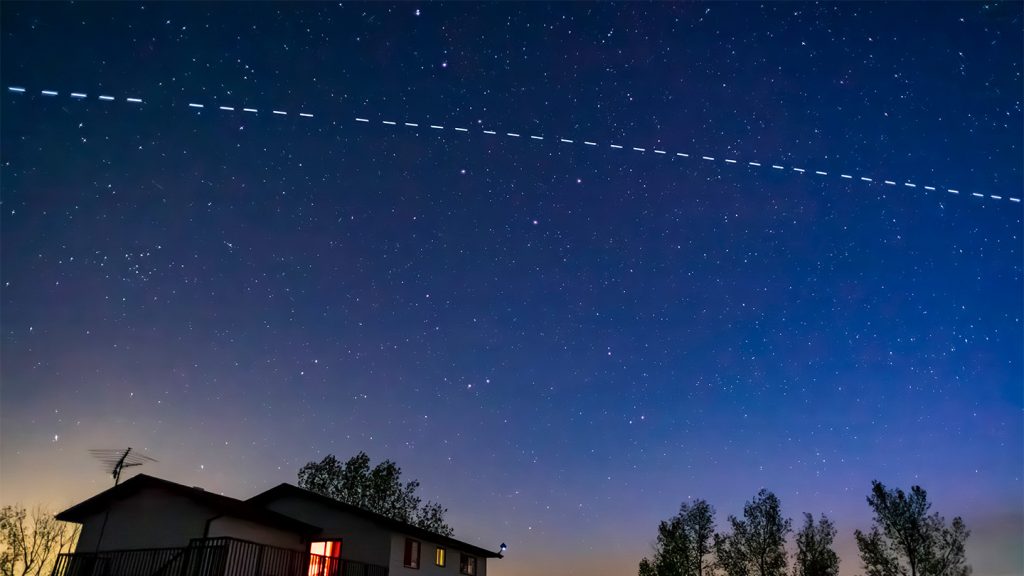A recent study suggests that SpaceX’s Starlink satellites, while enabling global internet access and cell phone communications, are also posing a threat to radio astronomy. The latest generation of Starlink satellites emits unintended electromagnetic radiation that is more than 30 times brighter than emissions from previous versions. Because these newer satellites orbit closer to the Earth, they appear even brighter to ground-based telescopes, potentially masking observations of dimmer astronomical objects like distant galaxies or stars.
Radio telescopes collect lower-energy waves from sources emitting radiation at longer wavelengths. Researchers used six radio telescopes near Exloo, Netherlands, to characterize the emissions from Starlink satellites during observation sessions in July. Despite passing through the telescopes’ field of view for only a short time, the satellites were extremely bright, being about 10 million times brighter than the faintest astronomical sources observable by these telescopes.
As SpaceX continues to launch approximately 40 second-generation Starlink satellites weekly, with over 6,000 already in orbit, the issue of bright satellite emissions interfering with radio astronomy is expected to worsen. Researchers have also detected emissions from other companies’ satellites and are working to measure those emissions as well. Continuous observations and data collection by scientists could potentially encourage satellite developers to redesign their equipment to minimize unintended radio emissions and mitigate interference with radio astronomy observations.
The study by Cees Bassa and his team highlights the significance of addressing the impact of satellite emissions on radio astronomy observations. With the increasing number of satellites being launched into orbit, the potential for interference with ground-based telescopes and the masking of astronomical objects poses a serious challenge for the astronomical community. The researchers hope that their findings will prompt satellite developers to work towards reducing unintended radio emissions to support the advancement of scientific research and observations in radio astronomy.
As the demand for global connectivity through satellite technology grows, it is essential to balance technological advancements with the preservation of scientific research and observations in various fields, including radio astronomy. Collaboration between satellite developers, scientists, and regulatory bodies will play a crucial role in addressing the challenges posed by satellite emissions on radio astronomy and ensuring the continued progress of scientific endeavors. By raising awareness and fostering discussions on the impact of satellite technology on scientific research, stakeholders can work towards finding solutions that benefit both technological innovation and scientific exploration.


